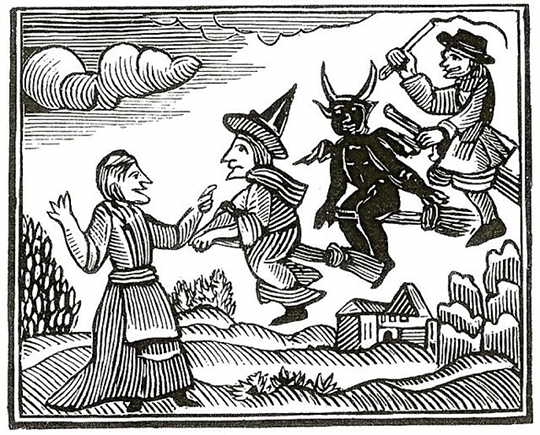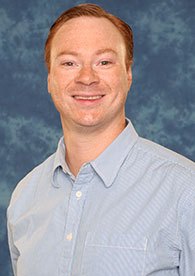In this interview with Philip Almond, Emeritus Professor of Religious Studies at the University of Queensland and Deputy Director of the Centre for the History of European Discourses, listeners are treated to a wide-ranging survey of the past decade of Almond’s work on witchcraft and demonic possession in early modern England. Beginning with Demonic Possession and Exorcism in Early Modern England (Cambridge University Press, 2004), Almond was among those that refocused discussions of this material to de-emphasize narratives and methods that had been located too centrally in the twentieth and not the sixteenth century. Witchcraft and possession were not medical phenomenon in any modern sense. They could not be written off as simple psychological episodes. Nor was it appropriate to bring modern tropes of mental health, rationalism, or religion as a private belief into the discussion of what people in the 16th to 18th centuries experienced.
Perhaps this discourse is largely a boon following Stuart Clark’s seminal Thinking With Demons (Oxford University Press, 1999). This included not just Almond’s Demonic Possession, but also Moshe Sluhovosky’s Believe Not Every Spirit (University of Chicago Press, 2007) and Sarah Ferber’s Demonic Possession and Exorcism in Early Modern France (Routlege, 2004) among many other fine volumes. As a body of scholarship, these works have increasingly sought to excise the present from its intrusive role in the analysis of the past. Can we discuss our historical subjects without seeing them as moderns who are simply living in the past? If this is familiar, you might be remembering some version of the steady drumbeat of David Lowenthal’s now clichéd dictate that the past is a foreign country.
Among historians (and anthropologists) this over-commitment to context may feel weatherworn, but for those in religious studies today it should be axiomatic. If a physician’s first pledge is to “do no harm,” then the scholar of religion must vow to “take religion seriously.” Almond’s reluctance to reduce witchcraft or possession to mere psychology is not on its face a rejection of reductionism writ large. He suggests early in the interview that he believes the root cause of the rise of possessions is millennialism or apocalypticism. Though we might be inclined to see witchcraft as a religious rebuttal to modernism, Almond appears unconvinced that the phenomenon can be a clear response to our contemporary understanding of this distinctive period of European history. “It’s too big a story,” he says, especially when a more obvious alternative is the specific consequences of the Reformation for individual branches of Christianity. If you’ll forgive the pun, the Devil is most certainly in the details.
What is striking about Almond’s consistent efforts to see the immediate and local contexts for witchcraft is the way it suggests that even our modern debates about the definition of religion are secondary to the challenges of historically-situated scholarship. To those who may have earlier leapt to ask, ‘what is the “religion” that we are taking seriously in the case of Almond’s subjects?’, the response is two-fold.
First, recognize how thoroughly such an inquiry is situated in the present. Such a modern scholarly category imposes an unwarranted discourse on our beleaguered subjects. It cannot possibly matter to long-gone early modern Europeans. Such inquiries benefit only us. If some version of the category advances our understanding of the relevance and significance of our subjects, it does not change the facts of our subjects’ experiences. After all, if we read the cultural guides about our “foreign country,” we haven’t changed the country’s citizens. Indeed, the danger is that in reading such a guide, we will change the citizens to appear to us as our guidebooks say they are. When the past has provided us as many truly excellent documents as early modern Europe has on witchcraft and possessions, what need have we to inject ourselves into their discussions? We have the details we need to compose a full picture of the era, its subjects, and much of the discourse surrounding demonic possession.
Second, Almond explains that it is the disconnects and differences between past and present that fuel his curiosity. Why is the past different? The efforts one must expend to answer such a question are wasted if we rush hurriedly to the present for some payoff about today’s society. While one duty of the scholar is to articulate the value of their work for the community that receives it, the receiving community must do the accompanying work of explaining why the present is different. This is a difference that matters to those of us today. It is also a disjuncture in scholarly products. When we fail to cleanly separate the line between past and present, as some works discussing demonic possession have done, the end result is a work that is likely to say more about how our modern ideas about religion or psychology succeed or fail in being persuasive in telling stories about the past for those in the present. A good story is not necessarily the same thing as excellent scholarship. In the former, readers are entertained and may find new ways to appreciate the differences of the present from the past. Only in the latter, however, are we likely to get a sense of what our subjects thought about witchcraft and possession. And then, if we so choose, we might ask, how central such ideas were to those things we would today describe as religious. I suspect, however, that even this mild extension is largely an exercise in anachronism.
I like to ask myself the following question of historically situated works. Are they tied so tightly to the moment when they were written that in the future they are likelier to be studied as representations of the scholarly moment of their production rather than for what they had to say about their subjects? I would like to think many of us strive to put the history of our subjects forward and not to become mere historiographical bywords for future scholars. I recommend Almond’s recent works as excellent models of being serious about the history of witchcraft and possession so that we might better understand that past on its own terms.



